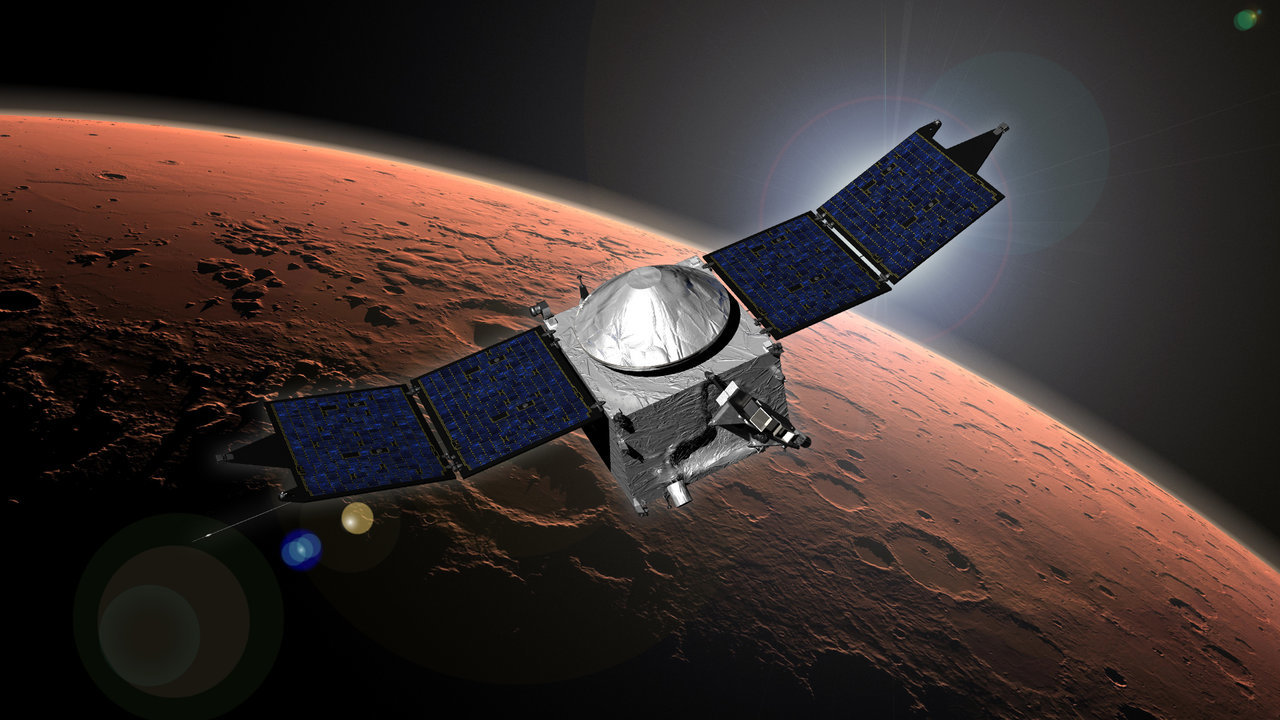After orbiting Mars for eight long years, NASA’s Mars Atmosphere and Volatile EvolutioN (MAVEN) spacecraft observed an extraordinary duo of auroras around the Red Planet that resulted from solar storms emanating from the Sun only a few days earlier on August 27. This observation is extraordinary since Mars lacks a global magnetic field so the solar flares must have been very powerful for MAVEN to detect them.
Solar flares are often referred to as space weather, with this series of flares being produced by the Sun on August 27, and were followed by what’s known as a coronal mass ejection (CME). This CME impacted the weak Martian magnetic field a few days later and created what’s known as a solar energetic particle (SEP) event, which was one of the brightest ever observed by MAVEN.
“By utilizing space weather models of CME propagation, we determined when the structure would arrive and impact Mars,” said Dr. Christina Lee, who is a space physicist in the Space Sciences Laboratory at the University of California, Berkeley, a member of the MAVEN mission team, and also works with the Moon to Mars Space Weather Analysis Office scientists. “This allowed the MAVEN team to anticipate some exciting disturbances in Mars’ atmosphere from the impacts of the interplanetary CME and the associated SEPs.”
For the event, MAVEN observed two types of auroras in Mars’ atmosphere: proton aurora and diffuse aurora, and both types were able to be observed primarily thanks to Mars being near the end of its annual dust storm season, which happens whenever the Red Planet orbits closest to the Sun.
“I was so surprised to see proton aurora at the same time as diffuse aurora, because it had never happened before,” said Dr. Sumedha Gupta, who is a postdoctoral researcher at the University of Colorado Boulder. “They’re both increasing with solar activity, so we hope it keeps happening!”
While the auroras observed by MAVEN were comprised only of data and no imagery, this nonetheless demonstrates how Mars is still an active planet, despite being both cold and bone dry.
While Mars presently lacks a global magnetic field, scientists continue to speculate that the Red Planet both once had one and the reasons why it might have disappeared, and part of the continued mission of MAVEN is to answer these longstanding questions.
As always, keep doing science & keep looking up!

